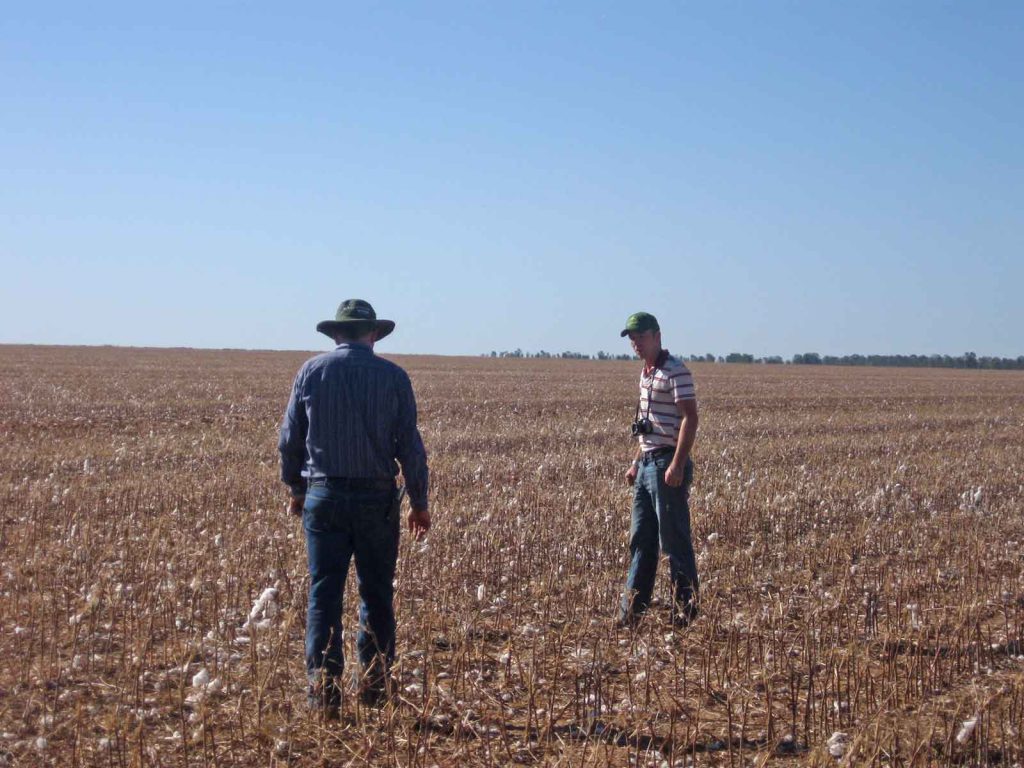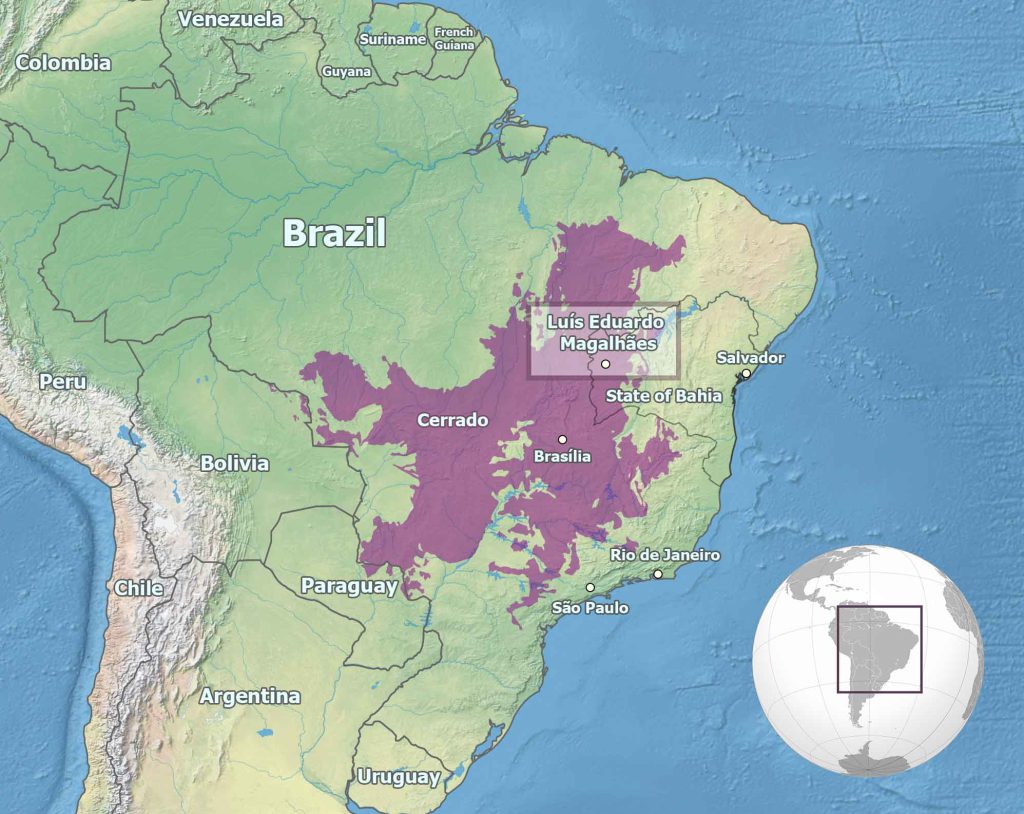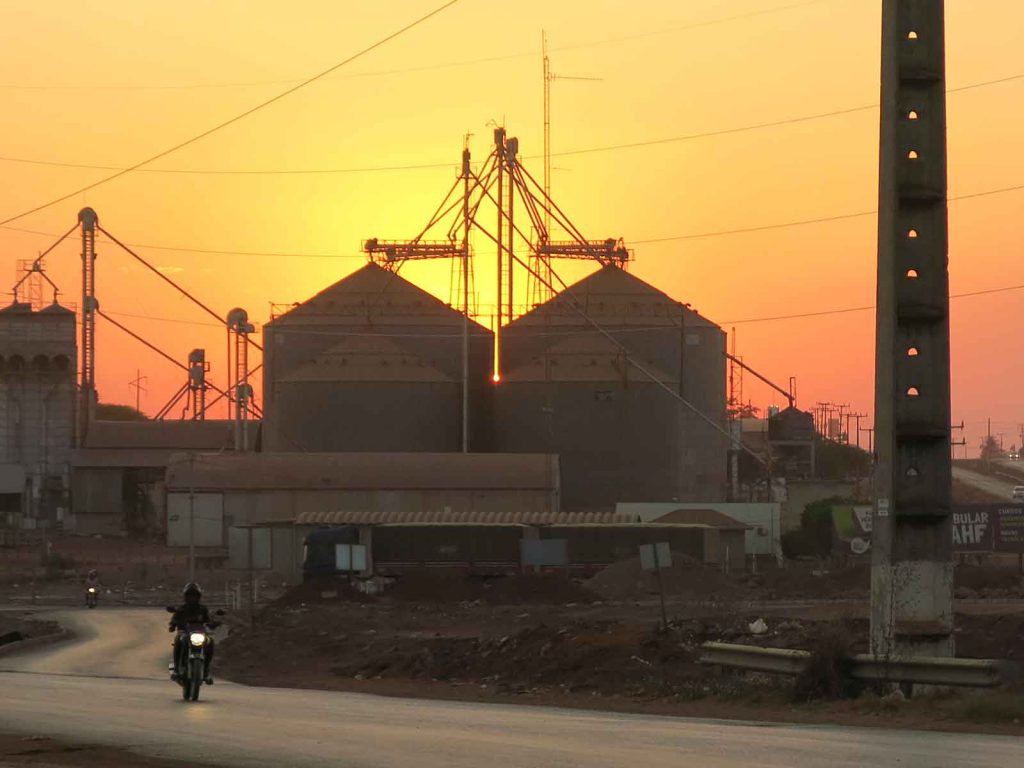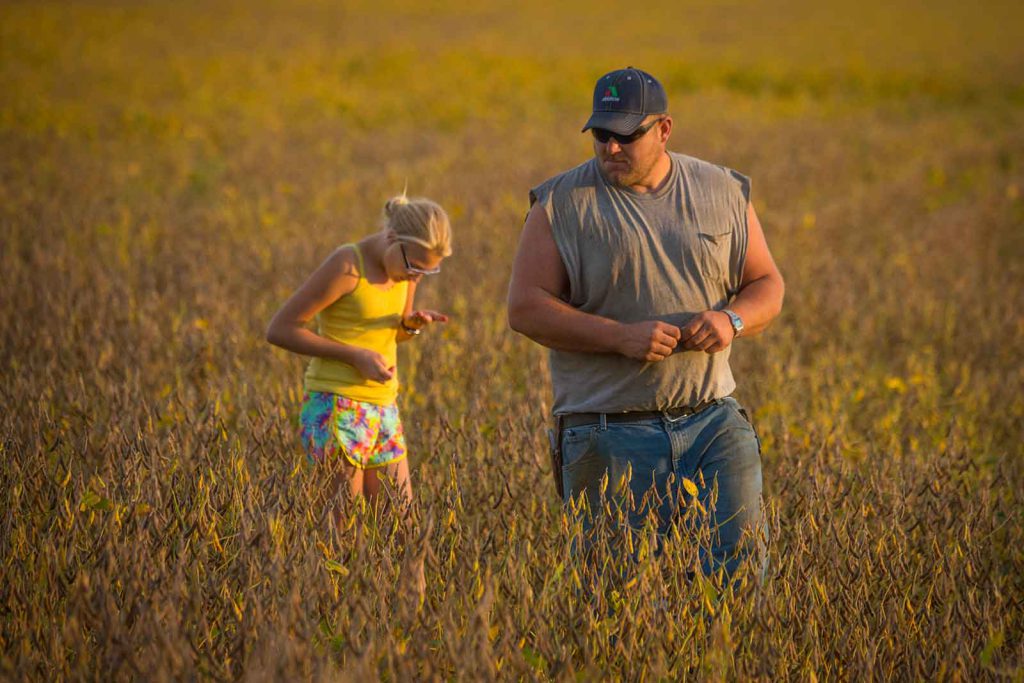U.S. Farmers Made in Brazil

On the outskirts of the town of Luís Eduardo Magalhães, Brazil’s capital of agribusiness in the western part of the state of Bahia, David (a pseudonym) reviewed his two pre-flight checklists. We were on our way that morning to visit his farm, perched atop an escarpment that brings regular rains to the region. Our 30-minute flight in his small plane sidestepped the hectic traffic of the roads below: a two-lane road where fast-moving trucks hauled cottonseed, soybeans, and farm implements.
David took us over circular green fields of irrigated crops, snaking rivers bordered by uncultivated savanna, and massive rectangular soybean fields. Over his own farm, we peered down on a familiar John Deere tractor—built by a company based in Illinois, driven by a Texan, owned by an Illinoisan—moving across his Brazilian field.
David is one of dozens of U.S. farmers who have purchased large tracts of farmland in Brazil to produce soybeans. Most of these farmers hail from farming families, but, for one reason or another, they didn’t have the money or the resources to continue their family tradition in the U.S. As the farm debt crisis devastated farmers in the 1980s and farmland values rose and profit margins shrank in the late 1990s, many gave up on starting or purchasing U.S. farmland and instead looked elsewhere. Brazil beckoned, with its cheap land and labor, agribusiness-friendly government, and seemingly ideal growing climate.
Over 13 months from 2012 to 2014, I worked with many of these American farmers in Brazil, and their families in the U.S. Midwest, to understand why they migrated and how it panned out. My anthropology dissertation focused on questions of land, work, and value, but I was also driven by banal curiosity. Did these farmers reproduce the storybook Iowa farm, with grain silos, a big red barn, a farmhouse, and children playing in the yard? Did they replicate Midwestern-style farming communities by building churches, farmer cooperatives, and other gathering places? Did they carry on Midwestern ideals and values of farming not just as a business but as a family-oriented and community-centered way of life?
The answer was largely no. On the farms of western Bahia, I saw no grain silos, red barns, or even farmhouses; the community was scattered and did not gather together. In Brazil, these U.S. farmers became managers who conduct more work in the office than on a tractor: Like David, they only occasionally dropped in to their distant, massive farms. In Brazil, they learned to define land as a financial asset with productive and speculative value—but little social value; they redefined a good farmer as a good businessperson.
David’s story begins on an Illinois family farm: a mixed livestock and crop operation owned and operated by three generations of farmers. Despite his family’s intentions to keep the family involved, David didn’t feel he had the opportunity to become the independent farmer he wanted to be. Like many farmers who are just starting out, he could not afford to purchase farmland and machinery to start his own operation. Agricultural journals and farming news magazines presented an appealing alternative: the Brazilian Cerrado, a tropical savanna ecosystem that is roughly the size of Mexico.
David toured rural Brazil with his father, and in 2001, his family invested in 4,400 acres of farmland in the heart of the Cerrado. The massive size of David’s purchase would easily place the farm in the top 2 percent of farms by acreage in the United States. It grew to 30,000 acres by 2012.
Most of the farmers I spoke with had a similar story, though most courted neighbors and friends rather than family as investors.
The Cerrado has seen huge swaths converted into intensive agriculture in recent decades (at the expense of Indigenous groups and local biodiversity). Most U.S. farmers, like David, have chosen to buy land in the western portion of the state of Bahia, on the eastern side of the Cerrado—in part because of the area’s proven track record for farming yields and in part because this is where U.S. connections have been forged. Situated at the frontier of soy production, the land also has speculative value for farmers who want to sell and return to the U.S. Nearly all have adopted the so-called “Brazil model” of soy farming: hiring farmworkers and employing cutting-edge technologies to cultivate gigantic plots of land remotely. These farmers see themselves more as managers of labor than managers of land.
Only a tiny fraction of farm owners in Brazil are from the United States; I found about 30 American farm owners in western Bahia, which hosts more than a thousand large-scale farmers. Other than their nationality, these Americans don’t stand out as unusual. Many other farm owners in the Cerrado are nonlocal: They come from Holland, Belgium, New Zealand, and southern Brazil. (Many of the southern Brazilian farmers are of Japanese descent.) Most are easily accepted into the local business community.
I saw no grain silos, red barns, or even farmhouses; the community was scattered and did not gather together.
When I asked the American farmers about the major challenges of working in western Bahia, I was struck by how few of them brought up the physical act of farming. I expected the different soils, climate, or pests to pose problems for them, but far more often, they brought up the bureaucratic challenges of dealing with government regulations and red tape, negotiating contracts with workers, and managing investments and investors. One farmer, frustrated with my continued questioning, solved this puzzle for me. He told me that he, too, had thought “learning plant names, insect names, learning to farm [in Brazil]” would be hard. But, “that’s easy,” he explained. “Crop scouts, farmworkers, know everything here. They tell you all you need to know.”
Farmers in western Bahia hire agronomists to scout fields; farmworkers to plant seeds, apply fertilizers and pesticides, and harvest; managers to lead teams of workers; and legal and accounting departments to keep their businesses running smoothly. Some even have public relations teams. With farm work left to laborers, farm owners spend little time on tractors. They are more often found in pickups as they drive between distant, massive fields of cotton, soy, and corn to check in on workers and in-field progress. Or they spend their days in their offices in the town of Luís Eduardo Magalhães. One farmer I spoke to said 60 percent of his time was spent in the office doing paperwork and handling worker contracts, ordering inputs, and adhering to worker and environmental regulations. Others said it was far more than that.
Despite all this, David still has a deep farmer’s tan and hardened, working hands. When I met up with him, he was usually wearing jeans smudged with dirt and a cap that bore a seed- or chemical-company logo. After we stepped out of his plane that day, we traveled his farm by truck, stopping to check seed depths, helping to load planters, and communicating with far-off workers by citizens band radio.
David’s farm is lined by a barbed wire fence and defended by armed guards. As with most farms in this region, some workers do live on his farm but not with their families. A typical farm in western Bahia is down a long dirt road and is often lined with eucalyptus trees and fenced in from the surrounding fields, with buildings that support agricultural production. There are buildings to house and feed workers, sheds for machinery and mechanical work, a soccer field for leisure time, and sometimes gardens for fresh vegetables and runways for small planes. The farmland is a speculative and productive asset, not deeply connected to family. The farmhands are mostly from Bahia or southern Brazil—on the farm simply to earn a living. There are no children playing in these fields. David’s own wife and daughter divide their time between a home in Luís Eduardo Magalhães and one in Illinois.
The setting feels very different from my own experience growing up on an American farm. I have cherished memories of working in fields alongside my brothers in the hot South Dakota sun, removing weeds by hand and machete. We collected eggs, chased the fast, mean black rooster, and were chased by merciless wild turkeys. Our farm was a site of economic and agricultural production but also of family, where we learned to work hard, respect the land, and be good neighbors.
Changes have come to this idyllic view of American farming. As the years went by, my family sold our pigs and lost our chickens to coyotes. New broad-spectrum herbicides, along with soybean and corn breeds resistant to those herbicides, made farming less labor-intensive; farmers complain these developments “made good farmers lazy and lazy farmers good.” That precipitated a decrease in the need for dedicated family work and a shift toward cheap contract work. Neighbors debated the ethics of renting land out to large-scale farm managers from across the state line rather than to young and early career farmers down the road who surely couldn’t pay as much.
Things in the U.S. seem to be shifting in the same direction as in Brazil: to larger, more corporate farming operations, sometimes where the owners have little connection to the land. The vast majority of U.S. farms are still family run. (In 2011, it was 96 percent of U.S. farms, according to the U.S. Department of Agriculture.) But sole proprietors only account for about half of farm product sales. Family corporations, and the output from corporate-owned farms, are on the rise.
On David’s family farm in Illinois, his cousins, siblings, father, uncle, and grandpa are still intimately connected to their land, spending hours a day driving their tractors. “I know my grandpa sees [the farm] as a legacy,” he told me. But this is a fading model of U.S. farming.
The shift to more corporate farming reduces financial risk. But it also creates a disconnect between the farmers and the land, their workers, and the work itself. Thinking of farming as a business can be lucrative, but it might make it less likely that farmers will be stewards of the land and its wildlife, and more likely that workers will be exploited.
I often asked the farmers in Brazil about their plans for the future. Most, including David, said they planned to return to the United States to farm. With them, they planned to bring new farming and business practices. They wouldn’t return to their tractors but to their offices to hire tractor drivers and multiply their efforts.
“Brazilian farmers are better prepared than the U.S. farmer for the way I think agriculture’s gonna head in the next 10, 20 years,” said David. He counts himself as a pioneer of that future.





































